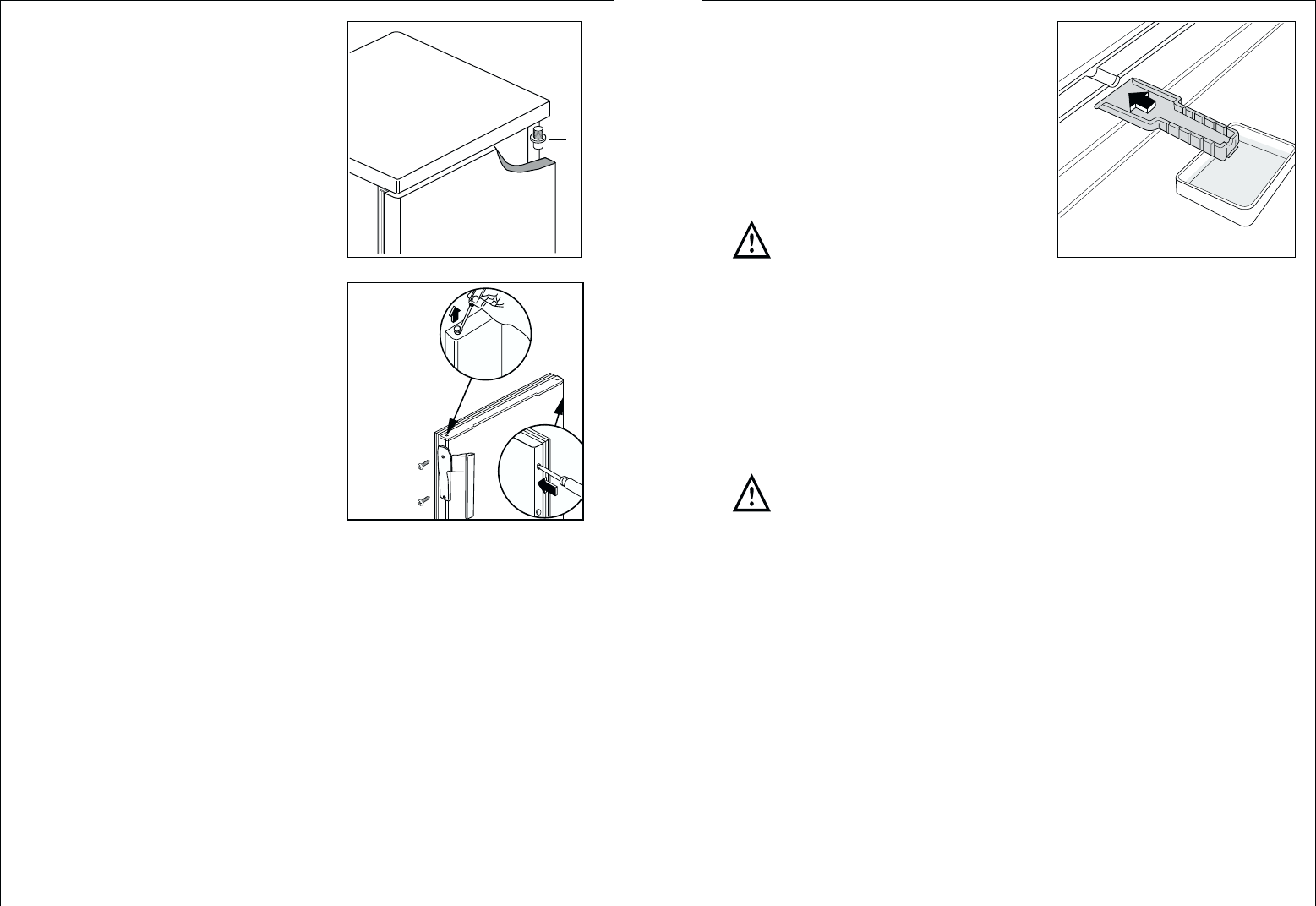
26
and remount them on the other
side.
5. Refit the door.
6. Refit bottom hinge (E) on the
opposite side, using the two
screws previously removed.
7. Remove blanking cover (F) from
ventilation grille (D) by pushing it
in the direction of the arrow and
refit it on the opposite side.
8. Refit ventilation grille (D), clip-
ping it into place.
9. Unscrew the handle. Refit it on
opposite side after having pierced
the plugs with a punch. Cover the
holes left open with the plugs
contained in the documentation
pack.
Attention:
After having reversed the ope-
ning direction of the doors check
that all the screws are
properly tightened and that the magnetic seal adheres to the cabinet. If the
ambient temperature is cold (i.e. in Winter), the gasket may not fit perfec-
tly to the cabinet. in that case, wait for the natural fitting of the gasket or
accelerate this process by heating up the part involved with a normal hair-
drier.
Electrical connection
Before initial start-up, refer to the appliance rating plate to ascertain if sup-
ply voltage and current values correspond with those of the mains at the
installation location.
e.g.: AC 220 ... 240 V 50 Hz or
220 ... 240 V~ 50 Hz
(i.e. 220 to 240 volts alternating current, 50 Hertz)
The rating plate is inside the appliance on the left.
A correctly installed, earthed socket is required for the electrical supply. The
supply must have a fuse rating of at least 10 Amps.
G
31
Cleaning and Care
For hygienic reasons the appliance interior, including interior accessories,
should be cleaned regularly.
Warning!
• The appliance may not be connected to the mains during cleaning. Danger
of electrical shock! Before cleaning switch the appliance offand rem ve the
plug from the mains, or switch off or turn out the circuit breaker or fuse.
• Never clean the appliance with a steam cleaner. Moisture could accumu-
late in electrical components, danger of electrical shock! Hot vapours can
lead to the damage of plastic parts.
• The appliance must be dry before it is placed back into service.
Attention!
• Ethereal oils and organic solvents can attack plastic parts, e.g.
– lemon juice or the juice from orange peals;
– butyric acid;
– cleansers which contain acetic acid.
Do not allow such substances to come into contact with appliance parts.
• Do not use any abrasive cleansers.
1. Remove frozen food and the food from the refrigerator. Wrap frozen food
in several layers of newspaper. Store it in a cool place, well covered.
D068
4. Insert the plastic scraper into the
recess provided under the defrost
water channel and place a collecting
basin under it.
5. Once defrosting is completed keep
the scraper for future use;
6. Turn the thermostat knob to the
required setting or replace the plug
in the power socket.
Warning!
Never use metal tools to scrape off
the frost
Do not use a mechanical device or any artificial means to speed up the
thawing process other than those recommended by the manufacturer.
A temperature rise of the frozen food packs, during defrosting , may shor-
ten their safe storage life.













